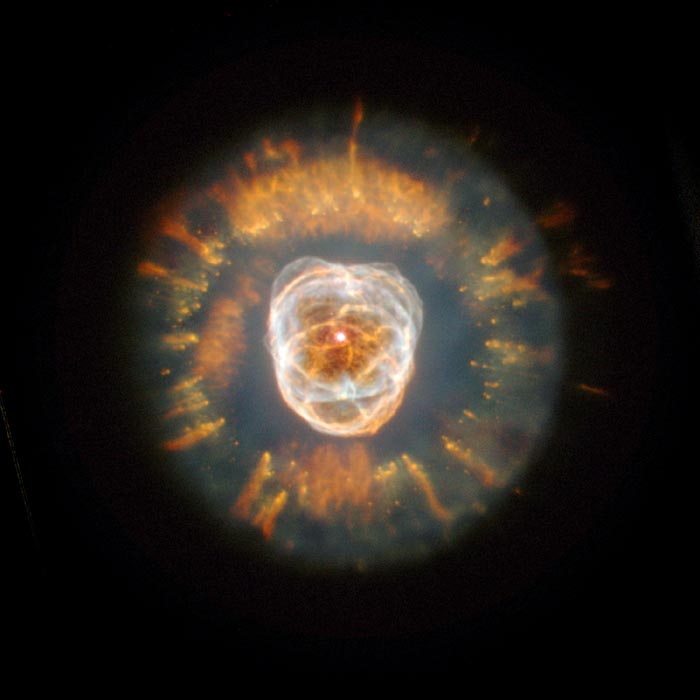
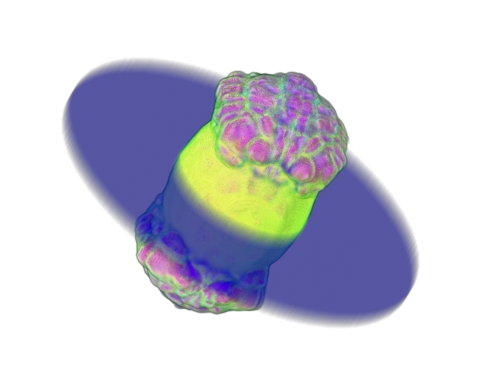


Above left is an image of NGC 2392 ("The Eskimo Nebula") taken with the Hubble Space Telescope WFPC2 after its December 1999 repair. The image is the result of combining four images obtained with filters that select the light emitted by various elements. They are: red, [N II] 6584Å; green, H-alpha 6563Å; blue, [O III] 5007Å; purple, He II 4686Å. (Further information and higher resolution images can be found on the Space Telescope Science Institute's (HST) web site.)
On the right is shown a computer model of the bubble produced by the fast wind from the central star. The model also features an equatorial disk of material. We believe this is similar to the three-dimensional shape of the Eskimo, if we could view it from another angle. From the earth, we are actually looking down the long axis of the bubble.
To help us understand this nebula, John Blondin and Kazik Borkowski have carried out computer simulations at the North Carolina Supercomputing Center, using the VH-1 hydrocode. Their model starts with a slowly expanding (25 km/sec) wind from the red giant precursor. This slow wind is 5 times denser along the equator than toward the poles. Then a fast (1000 km/sec) wind starts blowing, running into the slow wind. The computer follows the details of how the fast wind blows an elongated bubble in the earlier material. One of the most interesting results of the computer model is the discovery that after the bubble has reached a certain size, the ends become unstable and develop dense ropes of material much like those seen in the HST image.
The Growth of the Wind-Blown Bubble
The fast wind from the central star runs into the slowly moving material ejected
earlier. The wind evacuates a growing bubble, but since there is an equatorial
disk of denser material, the bubble tends to expand fastest perpendicular to this
disk. Here is an mpeg movie of
the wind-blown bubble's growth. Note how the ends of the bubble start
out smooth, but eventually get quite "bumpy".
The Effect of the Viewing Angle
To see how we view this nebula, a movie of the model rotating in space is given here. Our view from the earth is like that near the end of the animation, where we are looking at the model almost end-on.
The "FLIERs" in the Eskimo
Many planetary nebulae show features known as "Fast Low-Ionization Emission
Regions", or FLIERs. Two regions in the Eskimo are believed to be FLIERs:
the bushy "beard" below the face, and the "hat" - the region of the fur above
the face which is thick and has a different texture from the rest of the parka.
(See labeled image at lower right.)
We believe these are actually blobs of material which have been ejected along
the bubble axis (upper left).
If viewed from a
different angle, they will appear closer to the center (upper right
),
and as we see them, looking almost along the axis of the
bubble, they appear like the model shown at lower left,
projected onto the fur of the eskimo's parka.
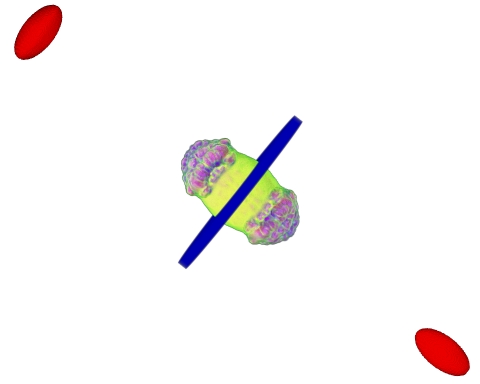
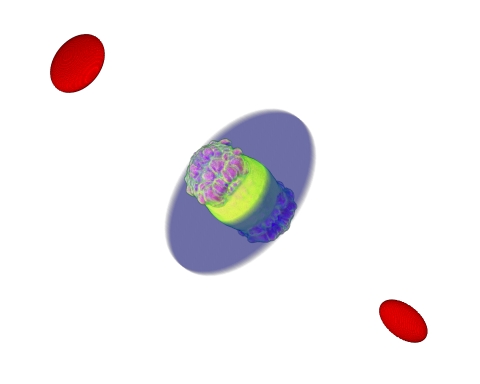
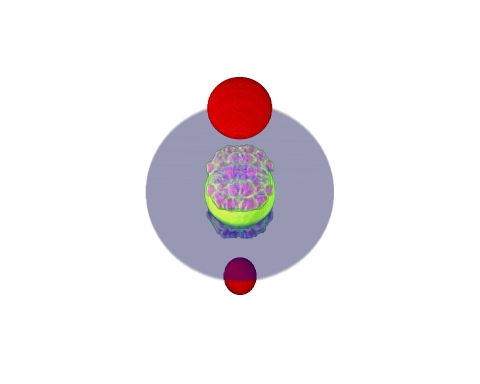
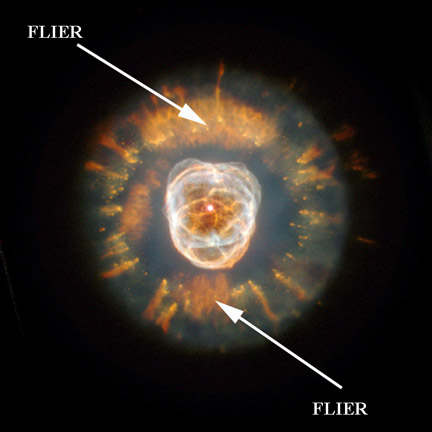
This web page was produced by:
John M. Blondin, North Carolina State University, Raleigh, NC
Kazimierz J. Borkowski, North Carolina State University, Raleigh, NC
J. Patrick Harrington, University of Maryland, College Park, MD